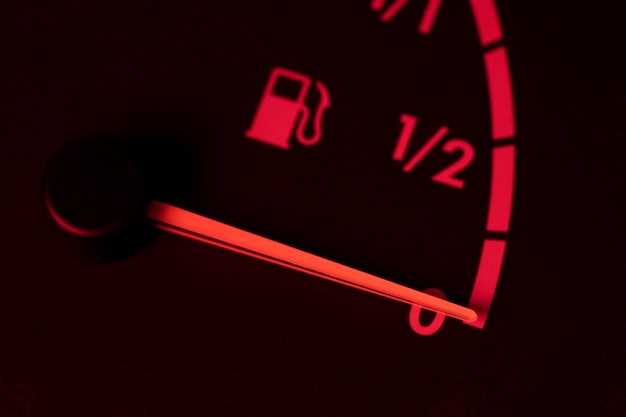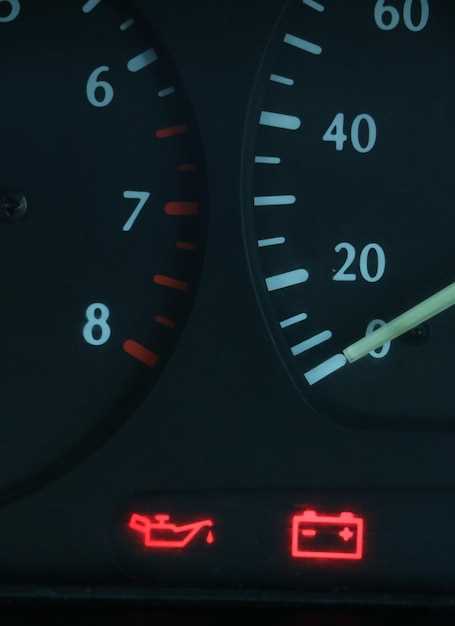
When it comes to tuning vehicles, the choice of gauges can significantly impact both performance and user experience. Enthusiasts often find themselves at a crossroads: should they opt for the modern digital gauges or stick with the classic analog options? Each type has its own unique advantages and drawbacks that can affect not only the tuning process but also the overall aesthetic of the vehicle.
Digital gauges are often celebrated for their clarity and precision. They provide real-time data that can be crucial during tuning sessions, allowing for quick adjustments and immediate feedback. On the other hand, analog gauges deliver a timeless charm and a tactile experience that many car enthusiasts cherish. The sweeping needles can evoke a sense of nostalgia while still providing crucial tuning information.
Understanding the nuances between these two styles can be essential for achieving optimal performance. Digital gauges may offer advanced features, such as customizable displays and data logging capabilities, which can be invaluable for serious tuners. Conversely, analog gauges are typically straightforward, making them user-friendly for those who prefer simplicity in their tuning process.
Understanding the Accuracy Differences in Tuning Gauges
When choosing between digital and analog gauges for tuning, accuracy is a crucial factor to consider. Digital gauges typically offer higher precision, often displaying measurements to one or two decimal places. This level of detail can be essential for fine-tuning adjustments, allowing users to achieve optimal performance in their vehicles.
Analog gauges, on the other hand, provide a visual representation through a moving needle on a dial. While they may not display exact numerical values, many enthusiasts appreciate the immediate visual feedback they offer. However, readings can be affected by parallax errors, particularly if the gauge is not positioned directly in front of the user, which can lead to inaccuracies in tuning measurements.
The calibration of gauges also plays a significant role in their accuracy. Digital gauges often come pre-calibrated and can maintain their accuracy through software updates. Analog gauges may require periodic manual calibration, which can introduce human error and variability in readings over time.
In summary, while digital gauges generally provide greater accuracy and ease of use, analog gauges can offer a tactile experience that some users prefer. Understanding these differences is essential for selecting the right type of tuning gauge that meets the precision needs of the tuning process.
Ease of Reading: Digital vs. Analog Display
When it comes to monitoring and tuning performance, the ease of reading gauges is a crucial factor. Both digital and analog displays have their unique strengths, which can impact their usability in various scenarios.
- Digital Gauges:
- Provide clear, precise numerical values, making it easy to get exact readings.
- Often feature backlighting or color-coded displays for enhanced visibility in low-light conditions.
- May include additional data such as averages or trends, allowing for comprehensive monitoring.
- Generally offer quick updates, which can be beneficial during dynamic tuning processes.
- Analog Gauges:
- Utilize a needle to indicate values on a dial, which can provide instant visual feedback on performance fluctuations.
- Allow for quick assessment of readings at a glance, as users can interpret the position of the needle without focusing on numbers.
- Can convey a sense of continuity and stability, which some users prefer in certain tuning scenarios.
- Often have a more traditional aesthetic that may appeal to enthusiasts who value vintage or classic instrument designs.
The choice between digital and analog gauges ultimately depends on personal preferences and specific tuning needs. For instance, digital displays might excel in scenarios where precision is paramount, while analog gauges may be favored for rapid assessments. Understanding the strengths of each type can inform better decisions in monitoring and tuning applications.
Durability and Maintenance Considerations for Each Type

When selecting between digital and analog gauges for tuning, durability and maintenance are critical factors to consider. Both types have distinct characteristics that can influence their longevity and the level of care required.
Analog gauges are often praised for their robustness. Built with mechanical components, they tend to withstand harsher conditions better than their digital counterparts. The absence of electronic circuits makes them less susceptible to electrical failures caused by vibrations or moisture. However, the moving parts in analog instruments can wear down over time, requiring occasional recalibration or replacement if precision begins to falter.
On the other hand, digital gauges offer a modern approach with their electronic displays and sensors. They are generally more sensitive to environmental factors, such as humidity and temperature fluctuations, which can affect their performance. While many digital gauges are designed with durability in mind, they may require more frequent maintenance, especially if they are exposed to extreme conditions. The electronic components can fail, potentially necessitating repairs or replacements sooner than their analog equivalents.
In terms of maintenance, analog gauges typically require minimal upkeep. Routine checks for mechanical integrity and cleanings are often sufficient to keep them performing well. Conversely, digital gauges may need software updates and battery replacements in addition to the physical care to ensure accurate tuning readings.
Ultimately, the choice between digital and analog gauges should factor in both the specific tuning applications and the environments in which they will be used. Understanding the durability and maintenance needs of each type is essential for ensuring optimal performance and longevity.
Power Requirements and Battery Life of Digital Gauges

When it comes to tuning and monitoring engine performance, the choice between digital and analog gauges often hinges on power requirements and battery life. Digital gauges typically rely on electronic components that require a consistent power supply to function accurately. This inherent requirement can lead to concerns about battery drainage, particularly in scenarios where gauges are utilized extensively.
Digital gauges may consume more power due to their advanced features, such as backlighting and data logging capabilities. However, manufacturers are increasingly incorporating energy-efficient technology, allowing for longer battery life without sacrificing performance. The use of low-power displays and microprocessors has contributed to significant improvements in the longevity of battery-operated digital models.
The battery life of digital gauges varies greatly depending on usage patterns and gauge specifications. Some units can last for several months on a single battery, while others may require more frequent replacements or recharging if they are used continuously. Integrating an efficient power management system can enhance battery life and reduce the need for constant monitoring of power levels.
Choosing a digital gauge for tuning requires careful consideration of these power-related factors. A gauge that uses minimal power while providing essential monitoring features can enhance the overall efficiency of your tuning process. Evaluating battery life, alongside the gauge’s functional benefits, will ensure a reliable and efficient setup for your vehicle.
Compatibility with Tuning Equipment and Software
When selecting between digital and analog gauges for tuning, compatibility with existing tuning equipment and software plays a crucial role in achieving optimal performance and accurate monitoring. Digital gauges typically offer advanced compatibility features, allowing seamless integration with modern tuning software and vehicle electronics. This integration facilitates real-time data logging, enabling users to analyze performance metrics and make informed adjustments.
On the other hand, analog gauges traditionally operate in a more standalone capacity. While they may lack the extensive connectivity features of their digital counterparts, some analog models can still be integrated into tuning setups through additional adapters or interfaces. However, this may result in a more complex installation process and potentially limit the breadth of data available for monitoring.
In terms of software compatibility, digital gauges often support popular tuning platforms, providing users access to a wider array of features, such as custom alerts and automated adjustments based on specific parameters. This digital feedback loop can be invaluable for performance tuning, where real-time data is critical for optimizing engine performance.
Ultimately, the choice between digital and analog gauges should consider how well each option integrates with the specific tuning equipment and software in use. Understanding these compatibility factors can significantly impact not only the ease of installation but also the effectiveness of the vehicle’s performance tuning process.
Price Range Analysis: Is Digital Worth the Investment?
When considering the purchase of gauges for tuning and monitoring vehicle performance, one of the most crucial factors is the price range. Digital gauges often come at a higher cost compared to their analog counterparts, prompting many enthusiasts to question whether this investment is justified.
Digital gauges typically offer advanced features such as higher accuracy, quicker response times, and more detailed readouts. They may also include additional functionalities like data logging, customizable displays, and connectivity options for analysis on various devices. This enhanced performance can be essential for serious tuners who need reliable and precise monitoring of engine parameters.
To better understand the cost implications, let’s analyze a side-by-side comparison of typical price ranges for both digital and analog gauges:
| Gauge Type | Average Price Range (USD) | Key Features |
|---|---|---|
| Analog Gauges | $50 – $150 | Basic display, visual appeal, less complexity |
| Digital Gauges | $100 – $500+ | High accuracy, fast response, data logging, customizable |
While analog gauges can be more affordable, they may lack the precision and additional features that many modern tuners seek. For users who prioritize the best possible monitoring and want to optimize their vehicles effectively, investing in digital gauges may prove beneficial in the long run.
Additionally, the long-term value of digital gauges often outweighs the initial cost. With the ability to provide comprehensive data and insights, they can prevent costly engine issues and enhance tuning results, potentially saving money on repairs and improving vehicle performance.
Ultimately, the choice between digital and analog gauges should align with your specific tuning goals, budget limitations, and preferences for monitoring capabilities. Weighing the initial costs against the potential benefits can help determine whether the investment in digital gauges is indeed worth it.
